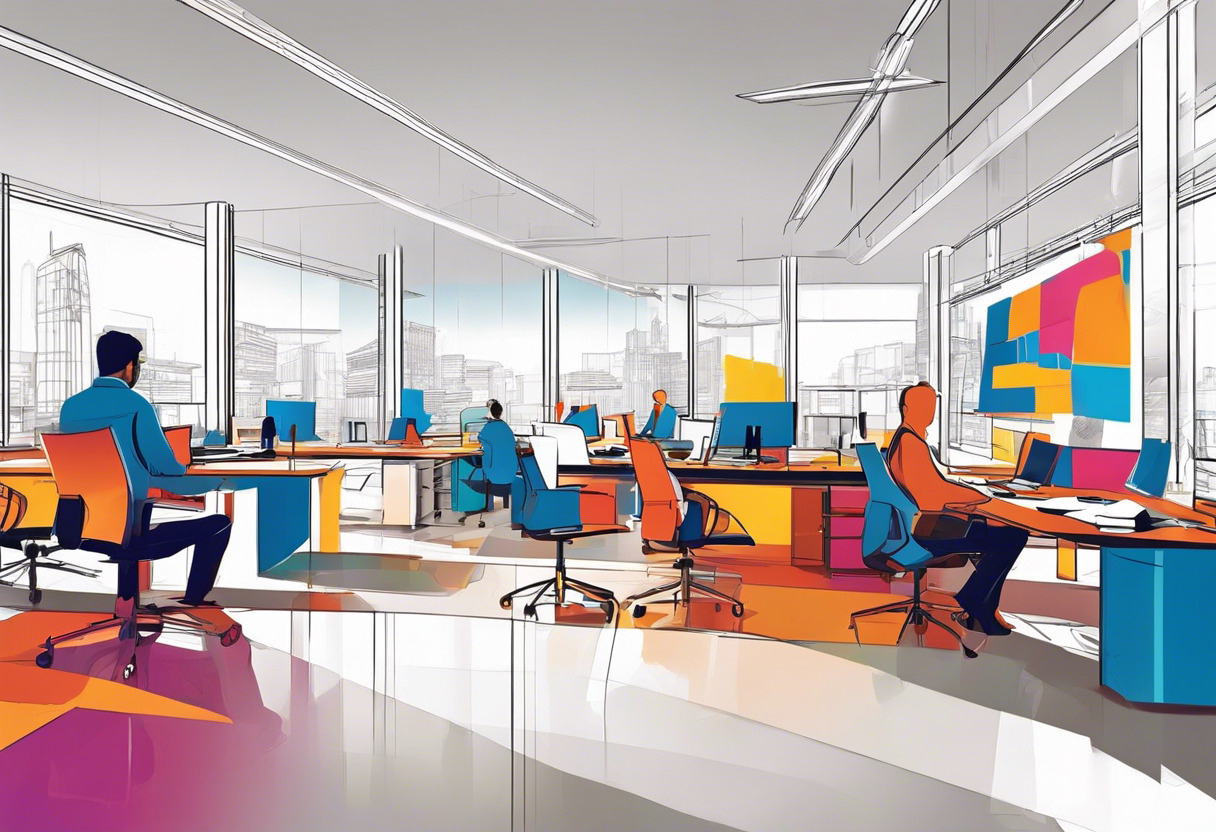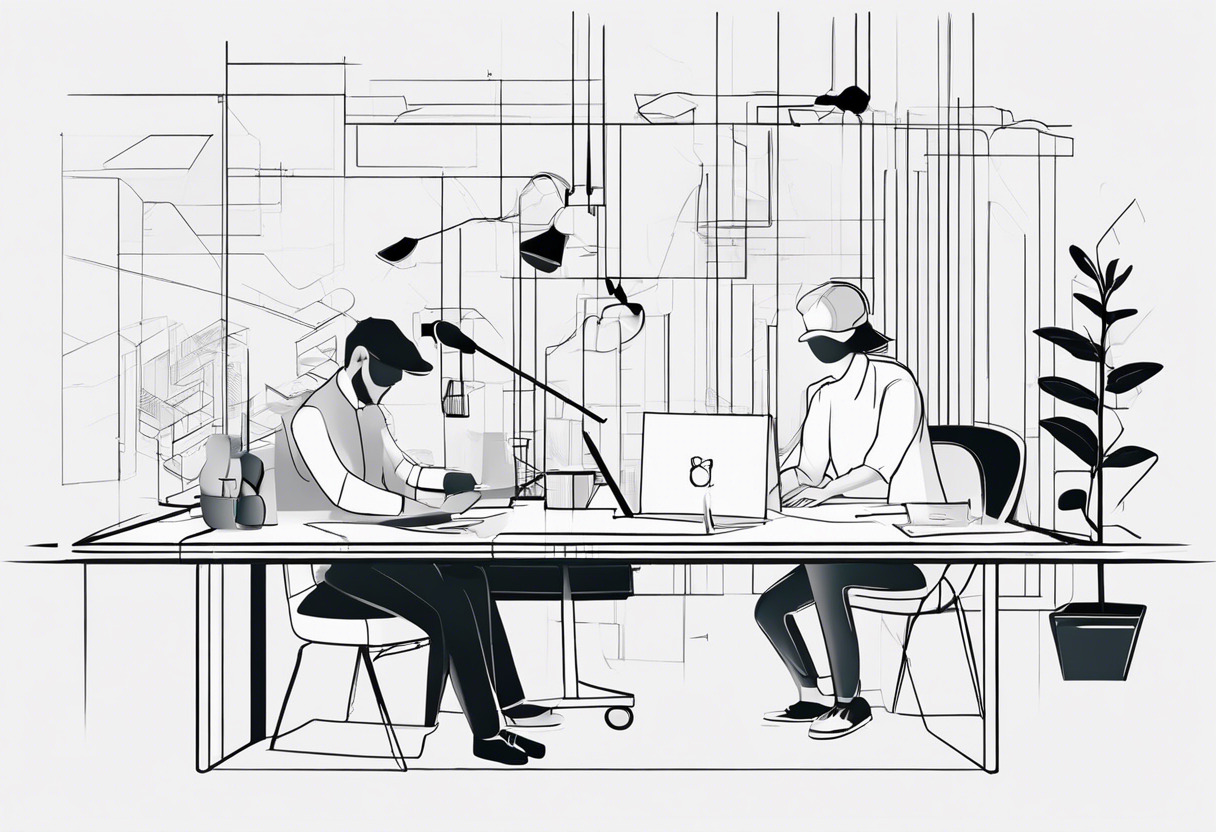For architectural intricacy and full lifecycle model tracking, choose Revit. Equipped with 4D capabilities, it offers superior collaboration tools for multidisciplinary teams, essential for the construction sector. However, for brevity and future-proofing capabilities across a diverse range of sectors, CAD emerges victorious, delivering cost-effective, efficient solutions that explicitly streamline workflows.

Main Disparities Between Revit and CAD
- Development: Revit developed by Autodesk for building information modeling. CAD, coined by Douglas T. Ross, focuses on 2D and 3D design creation.
- Application: Revit designed for architects and engineers in the construction sector. CAD has widespread usage spanning from automotive to fashion designers.
- Collaboration: Revit facilitates multi-user model work for real-time collaboration. CAD primarily used for singular design creation.
- Pricing: Revit operates on a subscription model, costing between $25 to $120 a month. CAD pricing remains varied, based on different software used.
| Comparison | Revit | CAD |
|---|---|---|
| Initial Release | April 5, 2000 | 1959 |
| First 3D Modelling Capability | 2000 | 1985 |
| Primarily Used In | Construction sector | Automotive, aerospace sectors |
| Main Intended Users | Architects, Engineers, Designers, Contractors | Architects, Engineers, Graphic Designers, Drafters, Designers, Manufacturers |
| Key Functionality | 3D design components, 2D drafting-elements, Building Information Modelling(BIM) | 2D, 3D design creation |
| Development | Autodesk | Various including Autodesk |
| Market Competition | Tekla Structures, Trimble, Bentley Systems, Nemetschek group | Variety of specific CAD softwares across sectors |
| Key Features | Parametric Modeling, Collaboration, Constructability Reviews, Energy Analysis, Rendering, Construction Documentation | Lower design costs, Increased productivity, Improved design, Streamlined workflow |
| Availability | Subscription models with cloud-based access | Variety of purchasing and subscription models dependent on software |
| Interface with VR | Yes | Yes |
| Pricing | $25 – $120/month | Varying |
What Is Revit and Who’s It For?
Revit is a CAD building information modeling software initially released on April 5, 2000, by Autodesk. It was originally developed by Charles River Software in 1997 and went on to be bought by Autodesk in 2002. Today, the software has become an instrumental part of the Architecture, Engineering, and Construction (AEC) sector, as it allows professionals such as architects, landscape architects, structural, electrical, plumbing engineers, designers, and contractors to create comprehensive 3D designs and 2D drafting elements for construction projects.

Pros of Revit
- Comprehensive 3D modeling and 2D drafting elements feature
- Robust parametric modeling approach through assigned dimensions and properties to 2D/3D data
- Automation feature that updates the entire model with changes
- User-friendly collaboration tools for multidisciplinary teams
- Advantageous Energy Analysis tools for sustainable design
- Interoperability with other Autodesk software
- Cloud remote work feature for anytime, anywhere access
Cons of Revit
- Cost can be high with monthly subscription pricing between $25 and $120
- Steep learning curve for beginners
- May require high-performance hardware
- Lacks specific tools for advanced structural design
What Is CAD and Who’s It For?
CAD (Computer-Aided Design) represents software tools intended for the creation of 2D, 3D designs. The term was originally coined by Douglas T. Ross in 1959, but high programmability wasn’t seen until the following decade. CAD is now prevalent across numerous sectors, notably automotive and aerospace, serving a wide range of professionals like architects, engineers, graphic designers, animation illustrators, drafters, fashion designers, and game designers.

Pros of CAD
- Significant reduction in design production cost
- Boosts productivity and enables design enhancement
- Facilitates better communication among team members
- Constantly updated with industry developments
- Vast variety of specialized CAD softwares catering to different industries
Cons of CAD
- High initial cost for software and potential licensing fees
- Learning curve can be steep for beginners
- Software bugs and glitches can hamper workflow
- Hardware requirements may be high for complex 3D modelling
The Final Take: Revit vs CAD – What’s Your Best Bet?
In this ruthless battle of technologies, we’re here to adjudicate. Let’s dive into the preferred choice for each auditorium.
Designers and Engineers
Revit wins the game for designers and engineers. With parametric modeling, automated updating, and sustainable redesign tools, Revit triumphs. Ability to collaborate effectively with multidisciplinary teams makes it a worthy choice.
- Sustainable design: Energy analysis tools
- Improved collaboration: Multidisciplinary team facilitation
- Parametric Modeling: Assigning dimensions, properties

Architects
Again, Revit takes the lead for architects. It makes 3D modeling and construction documentation a breeze, making it a clear winner in the sector.
- 3D Modelling: Real-life rendering
- Construction documentation: Shortening workflows

Manufacturers
The scales tip in favour of CAD for manufacturers. With its roots in the automotive and aerospace sectors, plus a history of directing automated machine tools, CAD takes the crown.
- Focused history: Primarily used in the automotive, aerospace sectors
- CAD/CAM: Directing automated machine tools

The distinction between Revit and CAD lies in their applicability. In design, architecture and engineering realms, Revit holds reign. With 50% using it for 3D modeling workflows, the data doesn’t lie. For manufacturing, CAD with its history-based, automated guidance fits the bill. Your choice? Depend on your niche.
Hannah Stewart
Content writer @ Aircada, tech enthusiast, metaverse explorer, and coffee addict. Weaving stories in digital realms.





